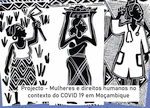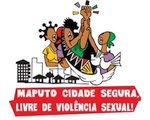An Approach for the Analysis of the
Poverty Reduction Action Plan (PARPA)1
Margarita Mejia
Published in: Outras Vozes, Suplemento do boletim n° 3, July 2003
A gender analysis of the Poverty Reduction Action Plan, PARPA, presupposes a highly complex exercise through which the concept of poverty and its characteristics in Mozambique are thoroughly examined, with the support of research conducted from a gender perspective to provide an analysis of Mozambican reality.
This article does not aim to present a gender analysis of PARPA, but rather seeks to contribute a few reflections on how to approach the object of study: poverty in Mozambique and its determining factors from the point of view of gender theory.
This reflection questions the way in which PARPA approaches the concept of poverty, framing it within a model of accelerated economic growth and basing it on macro indicators that are not able to define actions that incorporate the abilities and knowledge of women and men who are considered as poor, much less recognise their participation in development, given that consumption is given priority in the definition of the poor as disabled.
It is obvious that the action plan carried out by sectors and prepared based on PARPA by the Ministry of Planning and Finance is framed within the dominant model and creates exclusion. We must recognise the efforts that are made throughout the document to highlight the importance of creating opportunities for the poor. However, the concept of poverty does not permit the defined actions to modify, based on the dialogue with the local dynamics of women and men, the conditions of subordination and invisibility that condition access to and control of resources. This is particularly so for women, who are the main subjects of exclusion at the level of society in general and the family in particular.
This article proposes a dialogue based on a fair and empathetic model that recognises equality of rights and opportunities, abilities, knowledge and the contributions of excluded women and men to sustainable development and to economic development, with a view to sensitising the poverty reduction process in Mozambique.
Importance of PARPA
PARPA may be considered as the primary plan for development in Mozambique, given the enormity of its target group – the majority of Mozambican people2. It is a multi-sector plan that emphasises social sectors without omitting macroeconomic issues. What makes the plan’s analysis so important is its institutional function as a medium term planning tool; in other words, as a tool to promote a focus on poverty reduction in the allocation of public resources through the Medium Term Fiscal Framework (MTFF). PARPA is, therefore, a reference that is reflected in the Economic and Social Plan and in the State Budget.
It is only fair not to overlook how important it is to have PARPA in Mozambique, albeit on its existing terms. A gender sensitive PARPA is an ambitious and difficult goal. Therefore, in analysing it, the participation of organisations interested in the advancement of women and NGOs committed to poverty reduction is important and we should strive for their representation in the process. This approach is one more step towards ensuring the effective and efficient participation by excluded women and men, particularly women, and those who have an interest in their recognition.
Why gender analysis?
Analysis of phenomena takes the observer’s perspective or, rather, it conforms to the observer’s interests. These construct concepts and analysis blueprints for the interpretation of reality and they are also built based on dominant models which, in one way or another, benefit that which the model determines as important.
When one speaks about gender, many people assume that gender means women, women’s issues, programmes and projects for women. A gender sensitive PARPA could, therefore, mean that the proposed activities are only to benefit women. However, the issue is more complex than that. What we intend is for PARPA to present strategies and activities based on the situation and relations of Mozambican women and men who are excluded from the benefits of economic growth, which are based on the market economy.
In the current model, the excluding power establishes relationships in the political and economic field, creating globalising models that exclude social justice and restrict the State’s role in its duty to provide public and social services. These duties are passed on to investing enterprises that only provide them to those who can pay a price that would be profitable to the enterprise. That is, they become yet another product on the market. The poor are excluded and become dependent on their own abilities and local knowledge for subsistence. Among the poor, women are the ones who take subsistence upon themselves, without any recognition in the market economy, and therefore they become invisible in their work.
An analysis of Mozambican society, its cultural diversity, its patrilineal and matrilineal systems, its customary laws, is necessary in order to understand customs and uses upon which discrimination against women is built. Similarly, it is important to value women’s role in the family and in all fields of the country’s development. Only fertile dialogue based on thorough reflection will be able to open up avenues for recognition of equal rights and differences without hierarchy.
Mozambique signed the Convention for the Elimination of all forms of Discrimination Against Women (CEDAW, ratified on 2 June 1993) and the Mozambican Constitution proclaims this principle. Mozambique also signed the SADC Heads of State Declaration on Gender and Development in 1997, which recognises gender equity as a human right and calls for implementation and monitoring measures to be strengthened. Mozambique also signed the African Charter on Peoples and Women’s Rights. Nonetheless, in practice, it is not so simple. The CEDAW accession report and Optional Protocol, as well as the Addendum to the SADC Declaration, have yet to be ratified by the Council of Ministers. Many policies, programmes and even legislation do not reflect equal rights for women. This is so in the Civil Code, where discrimination is still entrenched, and also in the regulations and laws that have purported to apply equality (the Land Law). Discussion of the draft Family Law has been a long process and there have been many delays to its inclusion in the parliamentary agenda, despite the manifest importance of recognising women as equals in the private sphere. Many projects have not had the impact that they should have because they do not relate to the practical and strategic needs of women and their families.
Definition of poverty and its relationship with determining factors
The definition of poverty is fundamental if objectives and strategies are to be established. If the concept of that which is to be reduced is not clear, then one cannot know how to reduce it. Before entering into an analysis of the definition of poverty contained in PARPA, it is necessary to examine more thoroughly how exclusion, a primary concept in the origin of poverty according to our analysis, is brought about.
Exclusion originates from the power relations of the dominant model, which takes steps so that the main beneficiary of economic growth is financial capital, which establishes the market and investment rules, sacrificing social sectors, public services and employment. In this model, it appears logical that no investment should be made where profit cannot be generated.
At this point it is important to examine more thoroughly the construction of exclusion from economic opportunities, at the level of the poorest nations, as well as the reason why these nations join this game that benefits a few and marginalizes the majority.
One of the pillars of the model is free trade, which facilitates imports and forbids protectionism of national produce. This is detrimental principally to poor nations, which have to resort to high interest loans to supply national industry and its products, which become dearer because of the debt payments and thereby lose their competitiveness in the face of the inexorable law of supply and demand.
Poor nations find themselves compelled to export their natural, non-renewable resources, almost always in an unsustainable way. Their raw materials are not processed by local industries but by trans-nationals which, supported by the model’s promotion of the importance of foreign investment for development, set up their industries in these countries and use its cheap labour. This enables them to be more competitive with their products and yield greater profit on their investments, in contrast to the poor return for the very countries that encourage them to invest there.
In this process, those in charge of the model set up power relations with political powers in poor nations in order to facilitate the process and, at the same time, propitiate economic opportunities for decision makers. Many are excluded from the benefits and opportunities and they do not enjoy equal rights despite their contributing with their often-intensive labour to the success of the model. Even with their low salaries, they are induced to consume. Others are excluded from employment, which the model tends to rationalise in order to achieve its objectives, and these people come to live at subsistence levels and for this they depend on their knowledge, skills and solidarity networks. They have no consumption capacity, not even to benefit from public or social services, which cease to be rights and become consumer goods. Some are considered poor, with greater or lesser incidence, according to their consumption capacity. Of these excluded people, the women are the most sacrificed.
Failure by poor nations to accept the conditions of the model attracts the veto of the powerful ones and this, in turn, carries with it economic sanctions and destabilisation wars that lead to misery.
Returning to the subject of analysis, according to PARPA, poverty is “incapacidade dos indivíduos de assegurarem para si e os seus dependentes, um conjunto de condições básicas mínimas para a sua subsistência e bem estar, segundo as normas da sociedade” [the inability of individuals to secure for themselves and for their dependants a set of basic minimum conditions for their subsistence and well-being, according the norms of society].
It is not by chance that PARPA brings to light the difficulties in adhering to this. After an analysis, the first assessment was that poor individuals appear to be responsible for their own poverty, because of their lack of ability. This was one means that the dominant economic model used to get out of their responsibility: “the vicious circle of poverty”, which is sufficiently refuted by the gender analysis. Another circle, “women are victims of their own actions”, has been used to explain environmental degradation as the cause of poverty, in an attempt to discharge their responsibility for the environment of exclusion and subordination created by the model and responsible for poverty.
In the case of Mozambique, to qualify the poor as “disabled” would be to recognise that 70% of the population is disabled/incapacitated. If the qualification “impossibility” were used instead, there would be room for analyses that would permit us to obtain more suitable determinants of poverty and would open up more probabilities for the realisation of strategic actions for poverty reduction.
A gender analysis of “dependants” would be a treatise: dependants of whom and upon what? It seems obvious that, for the model, dependence is dependence on money and the person controlling it. The per capita consumption indicator is a monetary value that excludes or makes invisible the contributions of women and those of other family members, which are necessary for subsistence.
The high number of dependants and the different forms of extended family, among them polygamous ones, convert to survival strategies to overcome the failings of models that exclude them from access to resources and equality of rights and opportunities. That is to say, instead of being a determinant of poverty, it becomes another consequence of the conditions created by the dominant model.
This aspect does not relate only to the market economy, the latest model conceived by the dominators. Colonisation was another model, also justified in its time, which made rich those countries able effectively to exercise their domination and those which have been able to preserve the economic power they acquired through military action, a component that has been shown to be of great importance in our times. Some analysts, critics of the current system, call it neo-colonialism.
All this to say that “well-being according to the norms of society” has changed according to the models in force from time to time. In the consumer society well being presumes very high and sophisticated consumption parameters, which are indispensable in order not to marginalize the labour market. In wealthy countries, people earning a wage considered high by our standards are not able to purchase the things they need in order to be considered economically and socially competent. So they navigate in a sea of debt that keeps them far from well being but which contributes substantially to the consumption index, which is what the model is interested in.
PARPA shows a preoccupation with what being poor in Mozambique might be considered to mean. It cites various studies on the perception of poverty demonstrating the debate that has arisen around the topic and even points to concepts of power and exclusion as some of the trends of recent times. However, it appears to combine this with the consumption indicator, which increasingly globalises well being with the parameters of a consumer society in which basic social services are market products. Having access to these services means having the ability to pay for that which is needed and to which one ought to be entitled by right. The State ceases to assume its responsibilities.
As long as the country sees an increase in resource privatisation, including land, goods and services, and a demand for accelerated growth, then the incidence of poverty, not as an indicator but as a reality, will increase, since the subsistence strategies, which are practiced by women and are invisible to the model, will in fact disappear. People will become submerged in misery and an environment propitious to alternatives like crime and corruption will emerge. This can already be perceived in Maputo and is even more evident in the majority of Latin American countries, which have been exposed to the demands of accelerated economic growth for several decades now.
In general, all the determinants of poverty that appear in PARPA are more a consequence than the cause of the application of dominant models whose ultimate goal is to benefit themselves. The strategies seek to eliminate the causes to minimise the effects. However, since these are considered as the cause, no real change could be brought about.
The latest PARPA presents some interesting points about the connection between economic growth and poverty reduction, but, in general, it assumes as logical that greater economic development contributes, in itself, to poverty reduction, without any thorough examination as to how to bring this about in the long term.
While PARPA recognises the participation of the poor in the benefits of economic growth as a political imperative, gender analysis is practically excluded from the diagnostic of poverty and, consequently, from the strategies. The political will to incorporate these issues into the strategies and the action plan, as well as to execute them in the budget management, is important. This should be included in the review and evaluation of the plan, with a view to ensuring that the policy and programme changes that are needed for poverty reduction in Mozambique are introduced, guaranteeing equal rights and opportunities for all, men and women.
- Summary of the report presented to Fórum Mulher by the author.
- According to the Planning and Finance Minister, Luisa Diogo, in a discussion about PARPA with USAID early in 2002.
* * *







 Information in English
Information in English



















